As parents, we all want to provide our toddlers with the best opportunities for growth and development. Toddlers are curious beings, constantly exploring the world around them and soaking up new information like sponges. In this blog post, we will explore a variety of toddler learning activities that are not only fun and engaging but also promote cognitive, social, emotional, and physical development.
Table of contents
Introduction
It is during these early years that Toddler’s brains undergo rapid development, making it the perfect time to unleash their brilliance through enriching learning activities. These activities are designed to stimulate your toddler’s imagination, enhance their problem-solving skills, and nurture their creativity. So, let’s dive in and discover the wonders of toddler learning!
Understanding Toddler Development
Toddlers experience rapid development in various areas. Cognitive development involves the growth of language, memory, and problem-solving skills. Socially, toddlers begin to engage in parallel play, imitate others, and demonstrate empathy. Emotionally, they develop a sense of self and experience a wide range of emotions.
Physically, toddlers refine their motor skills and coordination. Key milestones for toddlers include the ability to speak short sentences, show curiosity, understand simple instructions, and exhibit more independent behavior. They also start displaying empathy, recognizing emotions, and forming basic friendships.
Tailored learning activities are essential to support their development. Cognitive activities can include reading books, introducing puzzles, and engaging in pretend play. Social activities like group playdates and cooperative games encourage social interaction.
Emotionally, providing a safe and nurturing environment helps toddlers build trust. Physical activities such as outdoor play and age-appropriate toys promote motor skill development. Overall, these activities foster a well-rounded and holistic approach to toddler development.
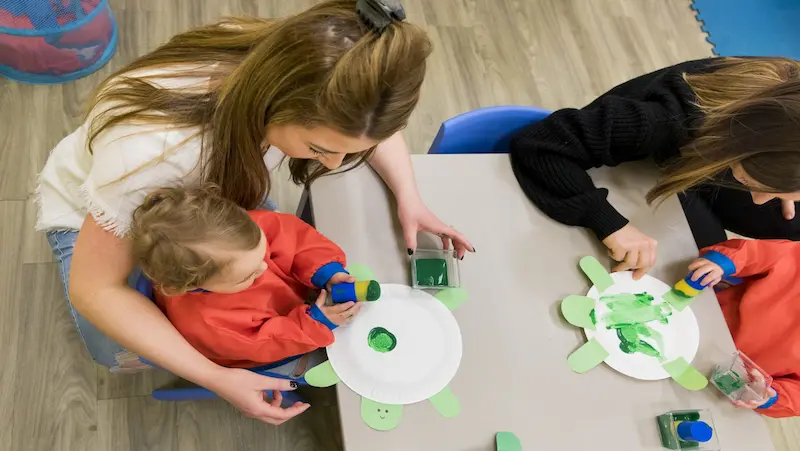
Creating an Environment for Learning
1. Designate a quiet and well-lit area: Set up a specific area in your home that is free from distractions and provides ample lighting. This area can be a corner of a room or a separate room altogether. Ensure that the space is quiet, allowing your child to concentrate and focus on learning.
2. Ensure safety and organization: Childproof the learning environment by securing electrical outlets, removing hazardous objects, and ensuring furniture is stable. Keep learning materials organized and easily accessible. Label storage containers and shelves to help your child find and put away materials independently.
3. Create a print-rich environment: Surround the learning area with books, posters, and educational materials. Display your child’s artwork and creations to foster a sense of pride and achievement. Incorporate labels and charts to enhance literacy and numeracy skills.
4. Personalize the space: Include elements that reflect your child’s interests and personality. Use colorful decorations, themed items, or their favorite characters to make the learning space engaging and inviting. Allow your child to contribute to the decoration and arrangement of the area, fostering a sense of ownership.
5. Utilize learning tools and technology: Incorporate age-appropriate educational tools and technology such as tablets, educational apps, or interactive learning games. However, ensure that screen time is balanced and monitored to maintain a healthy learning environment.
Remember, a conducive learning environment at home should inspire curiosity, promote independence, and offer a comfortable space for your child to explore and grow academically.
Coding websites for kids offer interactive and educational platforms to help young learners develop programming skills in a fun and engaging way.
Sensory Play
Sensory play is a fantastic way to engage your toddler’s senses and promote their cognitive and motor skills. You can set up a sensory bin filled with materials like rice, sand, water, or dried beans. Allow your toddler to explore the textures, pour, scoop, and sort the materials. Add various objects like toys or natural elements to further enhance the sensory experience. Sensory play not only stimulates their senses but also helps them develop fine motor skills and language as they describe what they feel.
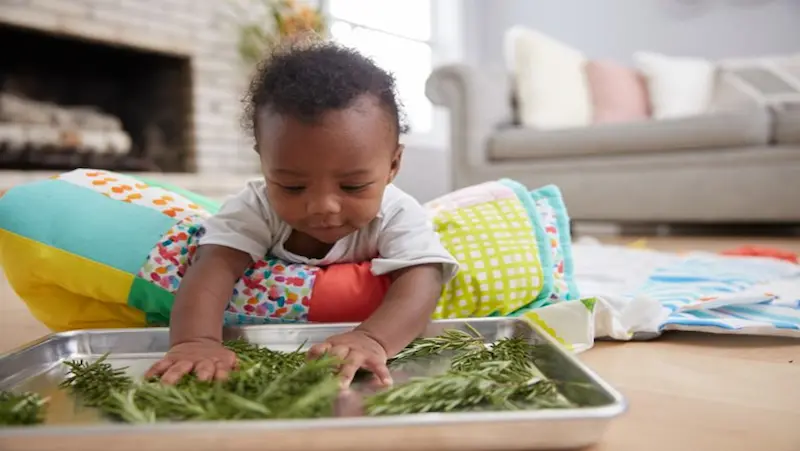
In the above image, the child is trying to touch the leaves and it is trying to feel them. The concept of feeling through touch and smell comes under sensing. This is the basic foundation for sensory play. The child looks cute, doesn’t he?
Benefits of Sensory Play:
- Cognitive Development: Sensory play enhances your toddler’s cognitive skills by encouraging them to use their senses to explore and understand the world around them. It helps them make connections between different sensory inputs and strengthens their ability to process information.
- Fine Motor Skills: Activities like pouring, scooping, and manipulating objects in sensory play help develop your child’s fine motor skills and hand-eye coordination. They get to practice their grasping, pinching, and releasing movements, which are crucial for future tasks like writing and self-care.
- Language Development: Sensory play provides opportunities for language development as your toddler describes what they feel, hear, or see. Encourage them to express their experiences and engage in conversations about the sensory materials, fostering their vocabulary and communication skills.
- Emotional Regulation: Engaging in sensory play can have a calming effect on toddlers. It allows them to explore and process different sensations, providing a sense of comfort and relaxation. Sensory play can be particularly helpful for toddlers who are easily overwhelmed or seeking sensory input.
Sensory play opens up a world of exploration and discovery for your toddler. It stimulates their senses, promotes their cognitive and motor skills, and provides a platform for creative expression. So, let your little one dive into the wonders of sensory play and watch as their curiosity and joy of learning come alive!
Language and Communication Activities
Storytelling and Reading:
Storytelling and reading are vital for language development and cultivating a love for books. Set aside dedicated reading time with your toddler, exploring various picture books with colorful illustrations. Use different voices for characters to make the stories come alive. Encourage your toddler to participate by asking questions and allowing them to turn the pages. You can also create your own stories together, involving their favorite toys or animals. This activity sparks their imagination, enhances vocabulary, and nurtures a lifelong passion for reading.
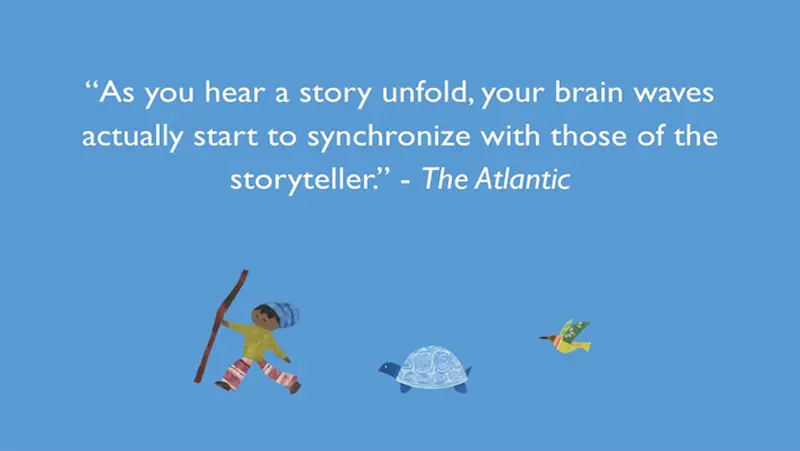
Arts and Crafts:
Engaging in arts and crafts activities with your toddler is an excellent way to unleash their creativity and improve their fine motor skills. Provide them with child-safe materials like crayons, washable markers, finger paints, and clay. Encourage them to create their own masterpieces by drawing, painting, or moulding shapes.
Display their artwork proudly to boost their self-esteem. You can also introduce simple craft projects like collages, paper plate masks, or handprint animals. These activities foster imagination and allow toddlers to express themselves while developing their hand-eye coordination.
There are different ways for developing Arts and crafts skills or talents for small children. In fact, many of the toddlers developed a precise mode of thinking, and their interest in the arts has improved a lot. With that focus, many toddlers have improved their ability to think and focus toward a goal-oriented ideology. Let’s have a small look at it deeper.
- Finger Painting: Finger painting is a classic activity that allows toddlers to explore different colors and textures while developing their fine motor skills. Use washable, non-toxic finger paints and provide large sheets of paper or a paint easel. Let your toddler freely use their fingers to create their own masterpieces. Encourage them to mix colors and experiment with various painting techniques.
- Collage Art: Collage art is an excellent way to introduce toddlers to different textures and materials. Provide them with child-safe glue sticks, colored construction paper, old magazines, fabric scraps, buttons, and feathers. Let them cut or tear the materials into pieces and create their own collage. This activity enhances their fine motor skills, spatial awareness, and creativity.
- Nature Crafts: Take your toddler on a nature walk and collect natural materials like leaves, twigs, pinecones, and flowers. Back at home, provide them with glue, paper plates, or cardboard as a base for their creations. Encourage them to make nature-inspired artwork by gluing the collected items onto the base. This activity not only promotes creativity but also connects your toddler with the natural world.
- Playdough Creations: Playdough is a versatile and tactile material that offers endless creative possibilities for toddlers. Provide them with different colors of playdough and a variety of tools such as plastic knives, cookie cutters, and rolling pins. Encourage them to mould shapes, animals, or objects of their choice. This activity develops their fine motor skills, hand-eye coordination, and imagination.
- Handprint and Footprint Art: Handprint and footprint art is a wonderful way to create lasting memories while engaging your toddler in a hands-on activity. Use child-safe, washable paint to make prints of your toddler’s hands and feet on paper or canvas. You can turn these prints into animals, or flowers, or even personalize them with their names. This activity allows toddlers to explore their body awareness, express their creativity, and develop their sensory skills.
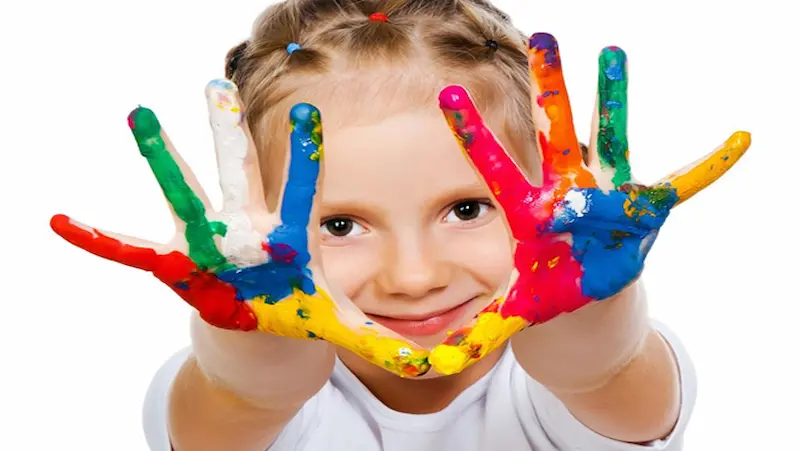
Math and Numeracy Activities
Introducing math and numeracy activities to toddlers at an early age can help foster their love for numbers, problem-solving, and logical thinking. By incorporating fun and interactive activities into their daily routines, you can lay a strong foundation for their mathematical development. Here are some engaging math and numeracy activities that are perfect for toddlers:
- Counting Objects
- Sorting and Matching
- Number Recognition
- Shape Exploration
- Simple Addition and Subtraction
- Puzzles and Building Blocks
- Measuring and Comparing
By incorporating math and numeracy activities into your toddler’s routine, as parents we are setting the stage for their future mathematical development. These activities not only enhance their mathematical skills but also promote critical thinking, problem-solving, and logical reasoning. It also helps majorly in Analytical thinking as well. So, let the math adventure begin with your curious little learner!

Fine Motor Skill Development
Fine motor skills play a crucial role in a toddler’s development as they enable them to perform tasks that require dexterity and coordination, such as writing, buttoning clothes, or using utensils. By providing opportunities for fine motor skill development, you can enhance your toddler’s hand-eye coordination, finger strength, and manual dexterity. Here are some activities that promote fine motor skill development in toddlers:
Playdough and Clay Play
- Stringing and Beading
- Puzzles
- Stacking and Building
- Fine Motor Tools
- Colouring and Drawing
- Threading Activities
Always provide a safe and supervised environment during fine motor skill activities. Offer encouragement and support while allowing your toddler to explore and learn at their own pace. Keep the activities age-appropriate and enjoyable to maintain their interest and motivation.
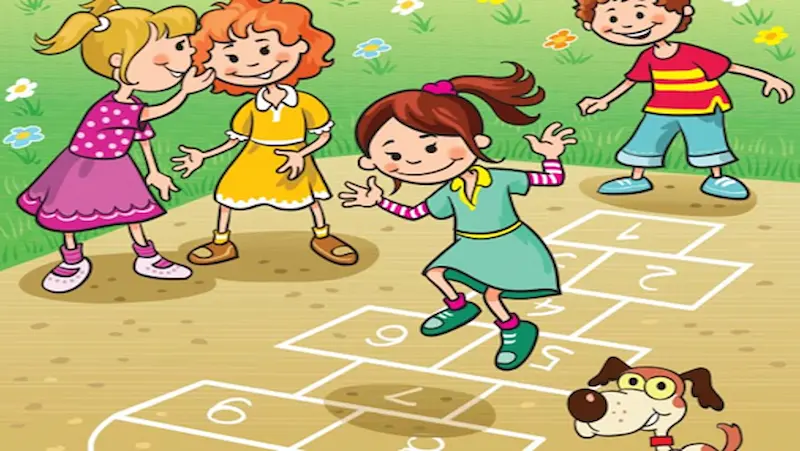
Gross Motor Skill Development
Gross motor skills are essential for a toddler’s overall physical development, as they involve the coordination and control of large muscle groups in the body. Developing strong gross motor skills helps toddlers improve their balance, coordination, strength, and overall physical abilities. Here are some activities that promote gross motor skill development in toddlers:
- Active Play
- Outdoor Play
- Dancing and Movement
- Balancing Activities
- Yoga and Stretching
- Ball Play
Allow them to explore and take risks within reasonable limits. Encourage and praise their efforts and progress to boost their confidence and motivation. By incorporating these gross motor skill development activities into your toddler’s routine, you are supporting their physical growth, coordination, and overall well-being.
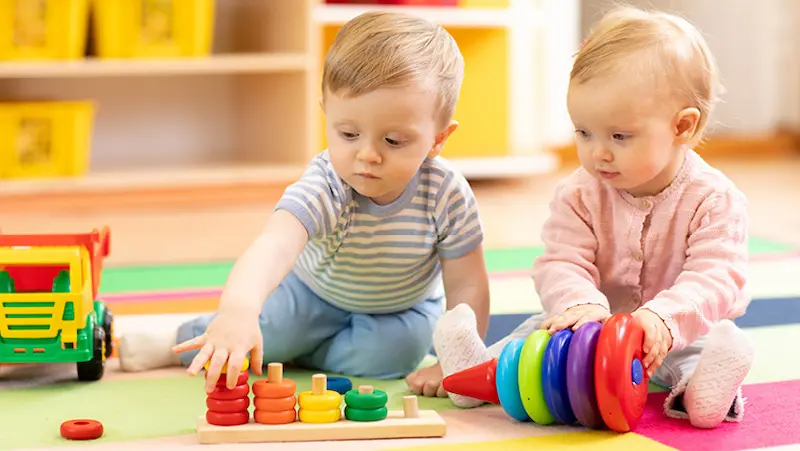
Know more about what is robotics for kids
Conclusion
Unleashing your toddler’s brilliance through enriching learning activities is an incredible journey. By incorporating sensory play, arts and crafts, storytelling and reading, and outdoor adventures into your daily routine, you provide your toddler with a well-rounded learning experience that nurtures their cognitive, social, emotional, and physical development.
Remember, the key is to make learning enjoyable, allowing your toddler to explore, experiment, and express themselves freely. As you embark on this exciting journey, observe your toddler’s interests and adapt the activities to their preferences.
The goal is to create an engaging and nurturing environment that fuels their curiosity, sparks their imagination, and sets the foundation for a lifelong love of learning. So, go ahead and unleash your toddler’s brilliance through these enriching learning activities!
Also, BrightChamps provides a comprehensive platform for learning about money for kids, offering interactive and engaging resources that teach financial literacy, budgeting, saving, and other essential money management skills.
Frequently Asked Questions
Effective learning activities for toddlers include reading books, singing songs, engaging in pretend play, puzzles, and sensory activities that stimulate their senses and encourage exploration.
Create a stimulating learning environment by providing a variety of age-appropriate books, educational toys, art supplies, and engaging activities that promote curiosity, exploration, and hands-on learning.
Activities such as sorting objects, shape recognition, matching games, and problem-solving puzzles can enhance cognitive development in toddlers.
Sensory activities like playing with textured materials, water play, sensory bins, and finger painting can engage multiple senses and promote learning and development in toddlers.
Engage in conversations, sing songs, read aloud, and encourage storytelling to promote language and communication development in toddlers.
Play is essential for toddlers as it helps develop social skills, creativity, and problem-solving abilities, and enhances their overall cognitive, emotional, and physical development.
Recommended educational toys for toddlers include building blocks, shape sorters, puzzles, stacking toys, musical instruments, and open-ended toys that encourage imagination and problem-solving skills.
Encourage creativity and imagination through activities like arts and crafts, pretend play, storytelling, and providing materials for open-ended play and exploration.
Make learning activities enjoyable and interactive by incorporating movement, music, hands-on materials, and colorful visuals, and allowing your toddler to actively participate and make choices.
Strike a balance by providing a mix of structured learning activities that target specific skills and allowing your toddler ample time for unstructured play and exploration to foster their curiosity and independence.

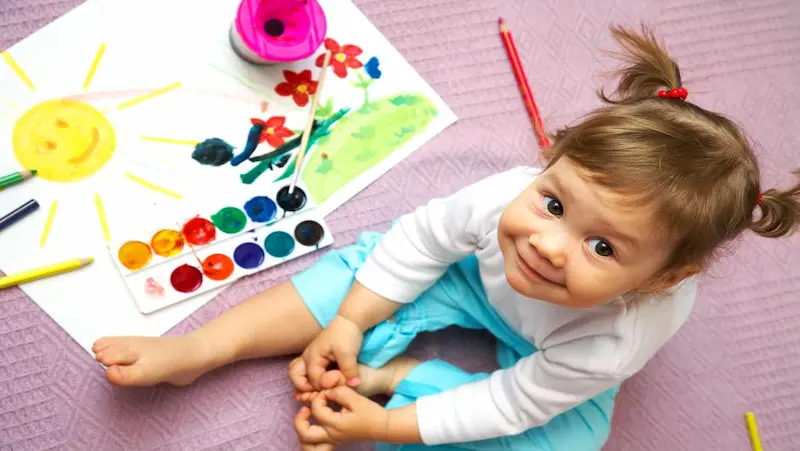
 We are an army of educators and passionate learners from BrightChamps family, committed to providing free learning resources to kids, parents & students.
We are an army of educators and passionate learners from BrightChamps family, committed to providing free learning resources to kids, parents & students.













